Last-Minute NYC Holiday Gift Guide 🎁
We’ve created a holiday gift guide with presents for the intrepid New Yorker that should arrive just in time—


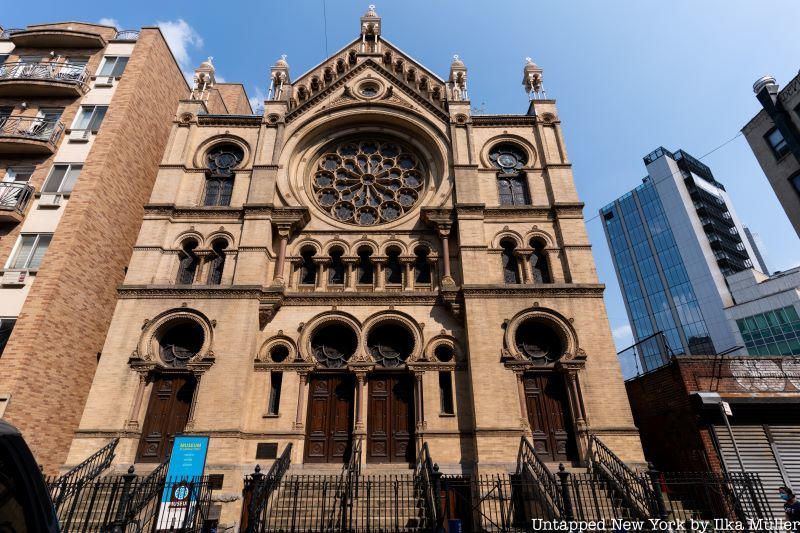
The architecture of New York City changes and adapts to the ever-changing lifestyles of New Yorkers. Many buildings, whether they start out as mansions or firehouses, churches or libraries, serve multiple purposes throughout their life cycle. In this list, we explore ten the repurposed synagogues of New York City, the sacred spaces that now serve as everything from condos and nightclubs to community centers and artist studios!
On Untapped New York’s upcoming Secrets of the Lower East Side Tour and Tasting, you’ll stop by and learn more about some of the former synagogues on this list, plus many other historic and cultural sites in the neighborhood. Led by longtime Lower East Side resident Richard Soden, this tour will also include tastings of delicious food from the area, like Pickle Guys’ pickles!
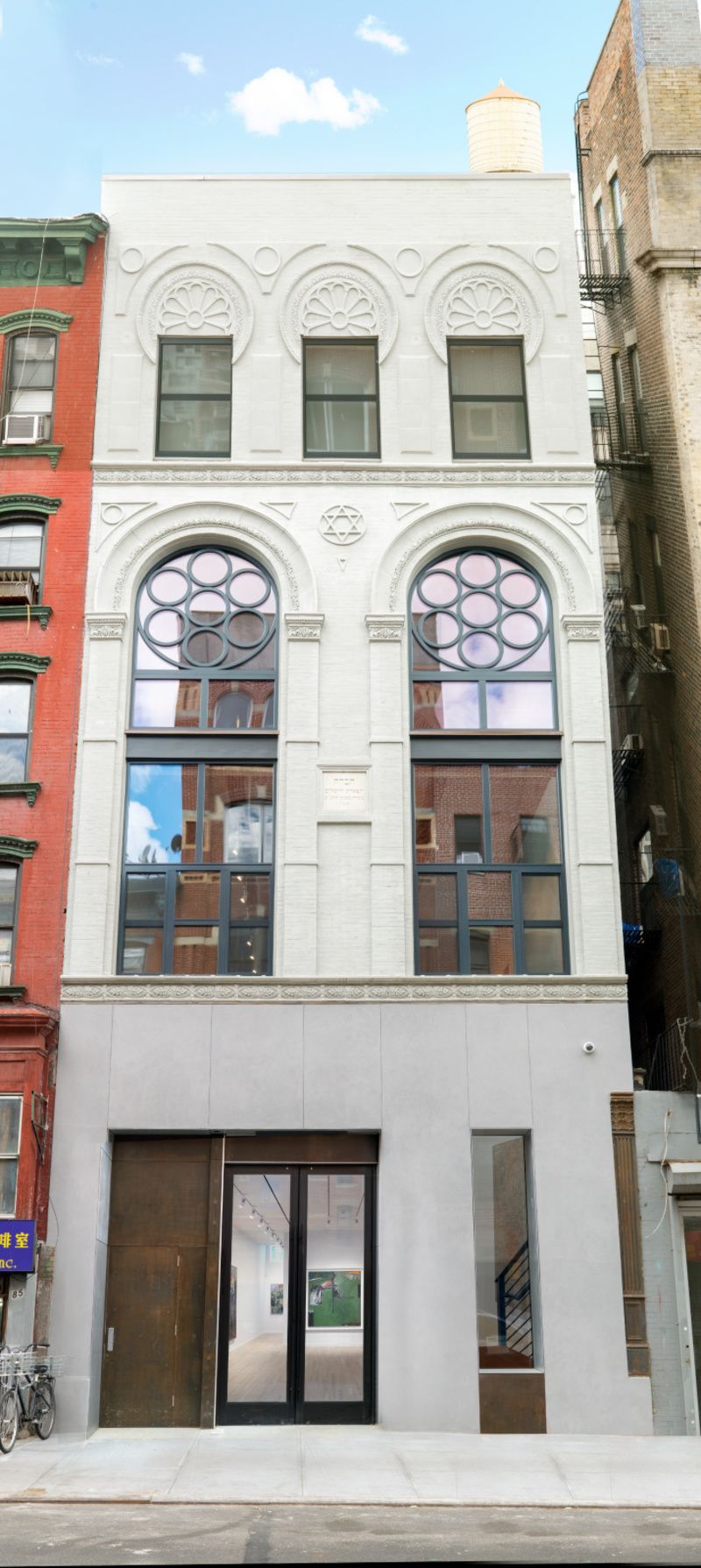
The Milton Resnick and Pat Passlof Foundation is a nonprofit organization that “promotes the legacies of the artists Milton Resnick (1917–2004) and Pat Passlof (1928–2011) and supports the work of other painters.” The foundation opened to the public in 2018 inside a repurposed Lower East Side synagogue at 87 Eldridge Street. The synagogue served as Resnick’s studio from the 1970s to the 1990s. Restoration of the building and its conversion into an art space was done by Ryall Sheridan Architects. While the interior looks much like any other art gallery with plane white walls hung with paintings, there are remnants of the building’s past that peek through.
From the outside, you can still see the name of the congregation inscribed in stone, B’nai Tifereth Yerushalayim, or Sons of the Glory of Jerusalem. And of course, it’s hard to miss those windows. In Resnick’s former studio space on the second floor, the rose windows stand 20 feet high, and the brick walls are exposed. The floor now serves as an exhibition gallery and programming space for the foundation. A smaller studio on the third floor, where Resnick worked in his later years, has been preserved just as he left it when he died in 2004. There are easels, paints, figurines, brushes, and posters that have remained untouched in the closet-sized room.
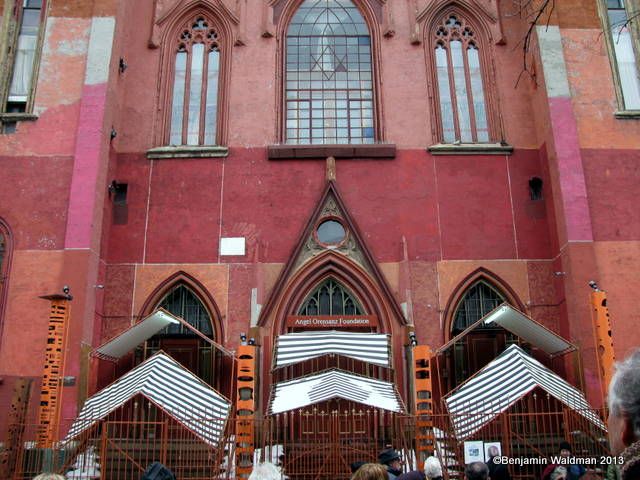
Ansche Chesed Synagogue
. At the time, it was the largest synagogue in the country, and services were conducted in German. After multiple shifts in ownership,the space
was abandoned in the 1970s. Eventually, in 1986, Angel Orensanz, a Jewish Spanish sculptor and painter, converted the building into a gallery and performance space. The local ReformShul of New York still holds holiday services here twice a year. Plus, the place has had its fair share of celebrity visits: Sarah Jessica Parker and Matthew Broderick were married here, and
composer Philip Glass and Florence + The Machine have hosted concerts.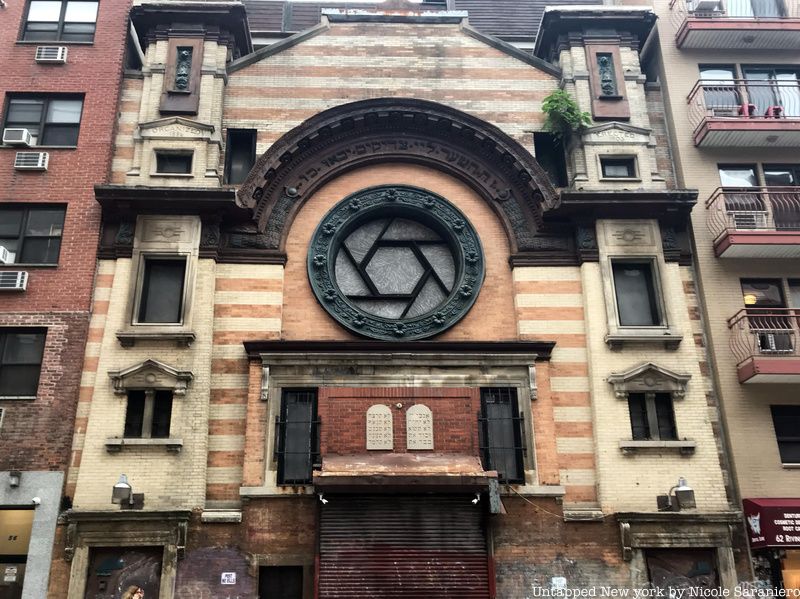
58-60 Rivington Street used to be the address of the First Warschauer Congregation, a Romanian synagogue. The congregation began in 1886 as Kehal Adath Yeshurin of Yassay at 131 Hester Street. By 1903, the congregation was looking to upgrade its place of worship.
They turned to Emery Roth — a Hungarian immigrant and the architect behind dozens of New York buildings like The San Remo, The Beresford, and the Ritz Tower. The synagogue facade that Roth designed was in a Moorish Revival style. The interior was upgraded as well. In 1904, the congregation celebrated their new home with a four-hour parade march, carrying their sacred Torah scrolls to the new location.
Many famous New Yorkers worshipped here including George and Ira Gershwin (who both grew up on Eldridge Street), Republican New York Senator Jacob Javits, co-founder of MGM and film producer Samuel Goldwyn, and comedian George Burns. After some financial struggles, the building was left vacant in 1973.
By 1980 there was a new tenant, SoHo-based sculptor Hale Gurland. Gurland transformed the space into his own personal studios and living quarters. The Roth-designed facade still maintains most of its original features, but some additions have been made. You’ll notice if you look at the central round window, the grilles are arranged to make it look like a camera aperture.
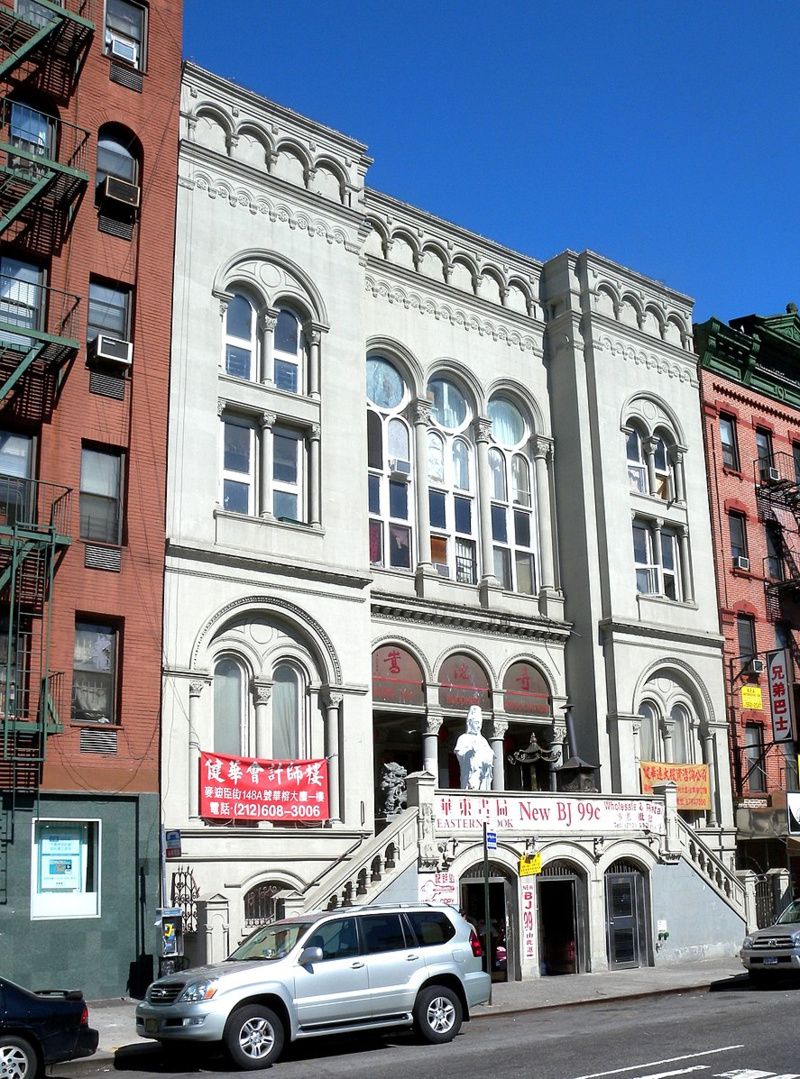
The former synagogue building at 13-15 Pike Street once served the congregation Sons of Isreal Kalw Arie. Now, it serves a congregation of another faith, Buddhism. Built in 1903-1904 and designed by architect Alfred E. Badt, the synagogue is a New York City landmark. The Sons of Isreal Kalw Arie, which began in 1853 remained in this large synagogue until the 1980s.
Today, the building has many uses. On the ground floor, flanked by the former synagogue’s twin staircases there is a commercial space. The main level houses a Buddhist temple and apartments can be found on the upper floors.
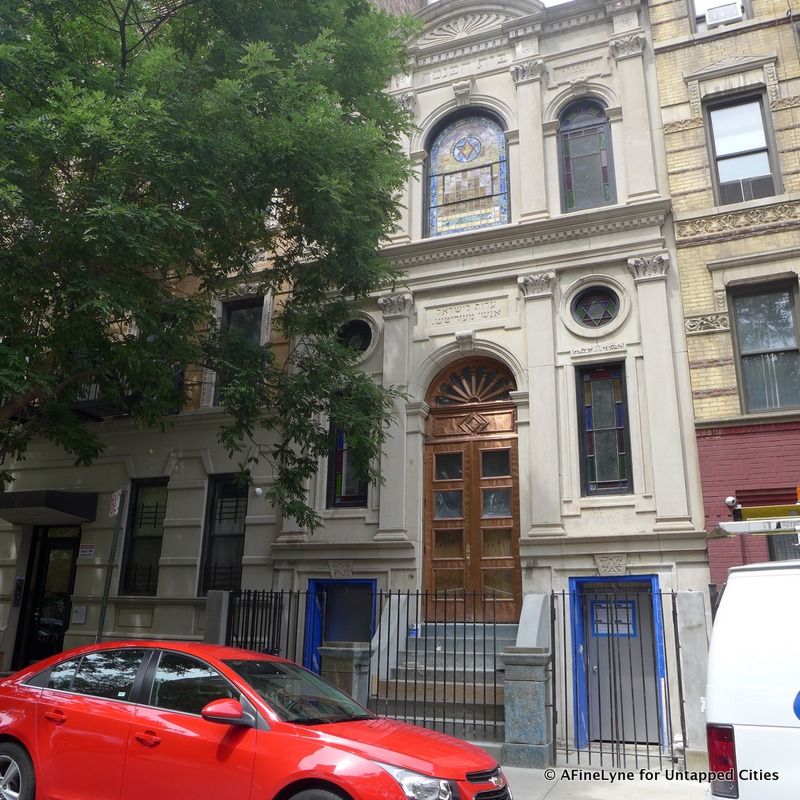
Meseritz Shul at 415 E. 6th St. is one of the smallest and most narrow urban synagogues in New York. It’s also been embroiled in quite a bit of controversy. For a time, the interior of this 1888 building was in shambles. There were many development plans put forth for the building and the site, including plans that simply knocked down the structure. The building was saved however by a highly debated landmark ruling in 2012. The designation set up a historic district in the East Village/Lower East Side covering 330 buildings located along Second Avenue and its adjacent side streets.
The cash-strapped congregation did move forward with a deal to convert its upper floors into condos. The deal also included the restoration of the lower-level worship space. The building’s gorgeous facade, in line with the landmark designation, didn’t change significantly. The upper-floor condos were put up for sale in 2016. One of the condos that hit the market was a $4.3 million dollar penthouse! After a four-year hiatus, the synagogue restarted services in 2017. We’ll consider this one partially repurposed!
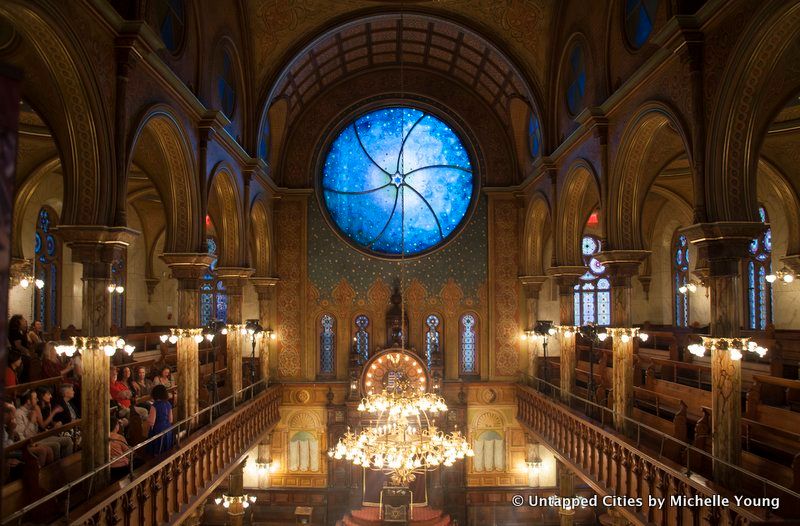
Perhaps the most famous repurposed synagogue is at 12 Eldridge Street. Now known as the Museum at Eldridge Street, this landmark synagogue was built in 1887. According to the Museum’s website, it was the first synagogue in America purpose-built by immigrants from Eastern Europe. After fifty years of wild success, by 1924, the synagogue started to decline. The recently enacted Immigrant Quota Laws and an increasing exodus of the Jewish population to other boroughs were major factors.
For forty years, the congregation worshipped in the lower levels of the building, leaving the gorgeous main sanctuary space closed off. It wasn’t until 1986 that restoration began, a process that would take nearly twenty years. Today, the beautifully restored space hosts tours, school programs, concerts, talks, festivals, and other cultural events that celebrate the history of the neighborhood and Jewish New York.
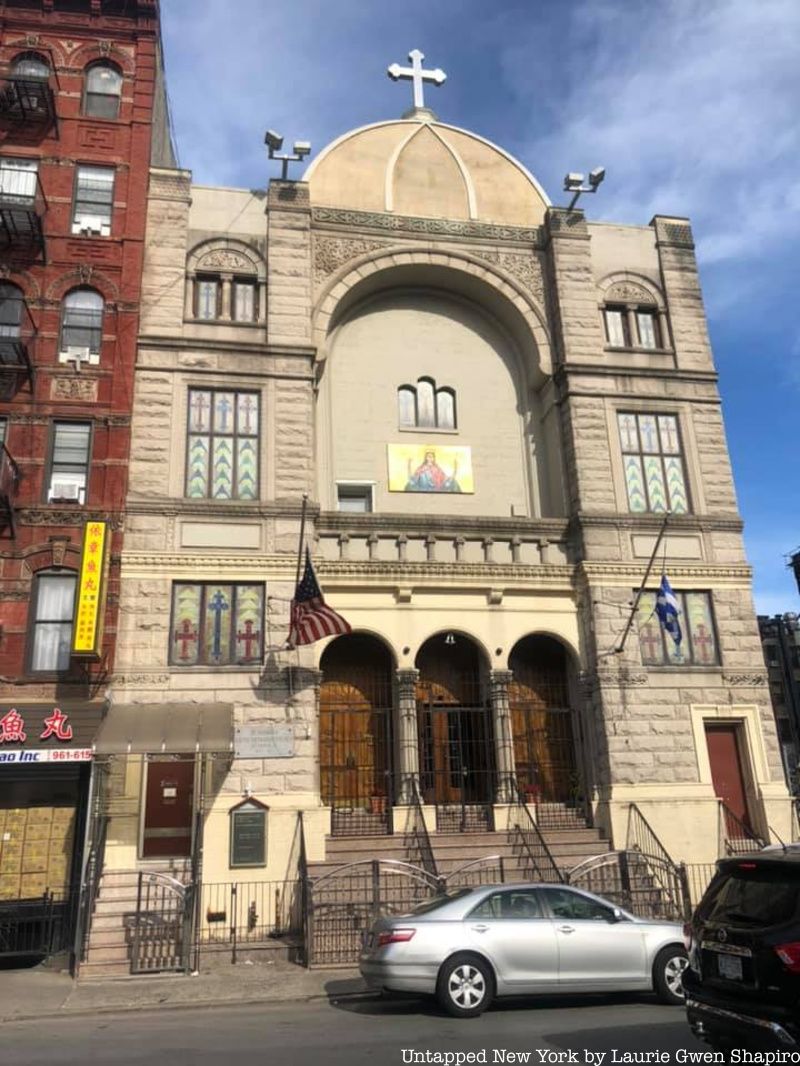
St. Barbara’s Greek Orthodox Church at 27 Forsyth Street in Chinatown is another synagogue turned church conversion. It is named after the martyr Saint Barbara, the patron saint of firefighters and artillery, a saint many looked to during World War II.
The synagogue building dedicated in 1892 for the Congregation Kol Israel Anshe Poland. After more than thirty years in service, the synagogue was foreclosed on in 1926. Eventually, a Greek Orthodox congregation acquired the building and in 1934 it became St. Barbara.
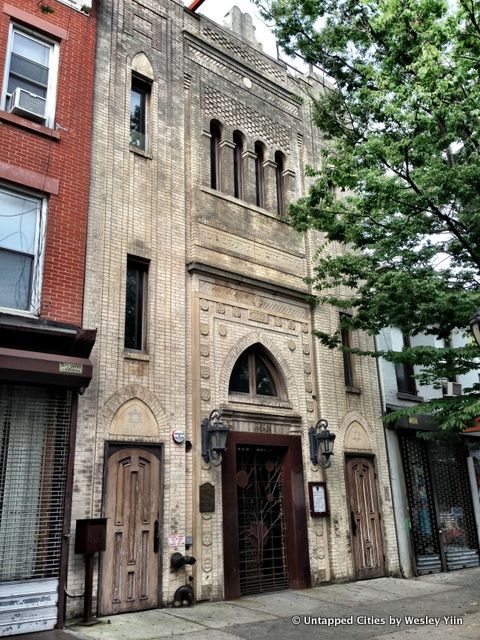
The former synagogue at 378 Atlantic Avenue in Boerum Hill, Brooklyn has unclear origins. But in 1917, whatever existed there became the Talmud Torah Beth Jacob Joseph, a school and synagogue. In the ’70s, the building switched functions twice, first to a heating/AC company and then to an antique shop.
Finally, in 2004, the former shul became the aptly named Deity, a nightclub, although it never reached the Limelight’s highs (or lows). Now, it’s transitioned into a high-end lounge and event space that hosts weddings.
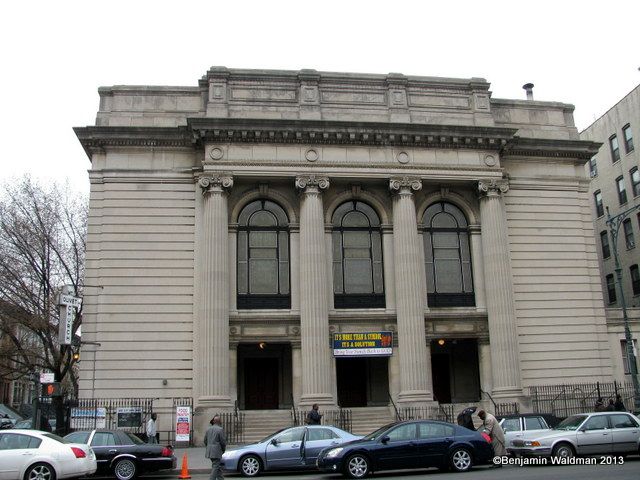
Mount Olivet Baptist Church at 120th and Lenox Avenue shares a story with many synagogues in New York that have been converted into churches. The Temple Israel of the City of New York was founded in 1873 and is still active today in Harlem. One of its many previous homes was a 1907 Harlem building, constructed for the synagogue in the Neoclassical style.
Perhaps it was the resemblance to a Roman temple that caused Mount Olivet to acquire it in 1925. The influential black Baptist congregation has left most of the Judaica intact, including an ark and Star of David fanlights.
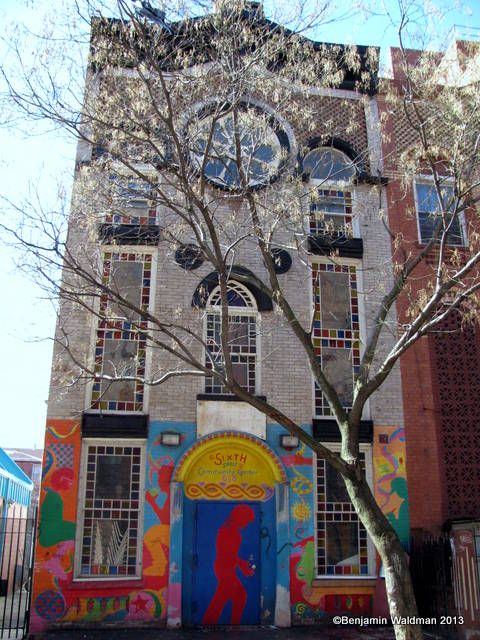
From 1905 until the ’70s, this building at 636 E. 6th Street in the East Village was a functioning synagogue for the Congregation Ahawath Yeshurun Shar’a Torah. Since then, it has served as a nonprofit health center seeking to educate and empower lower-income households in the area, Sixth Street Community Center. For instance, the center runs a Community Supported Agriculture program that supplies members with local produce.
Although the interior of the building has been renovated and the entrance painted over, most of the former shul’s exterior artistry has been preserved or restored. Check out the plaque bearing the synagogue’s name that is still in placed above the entrance.
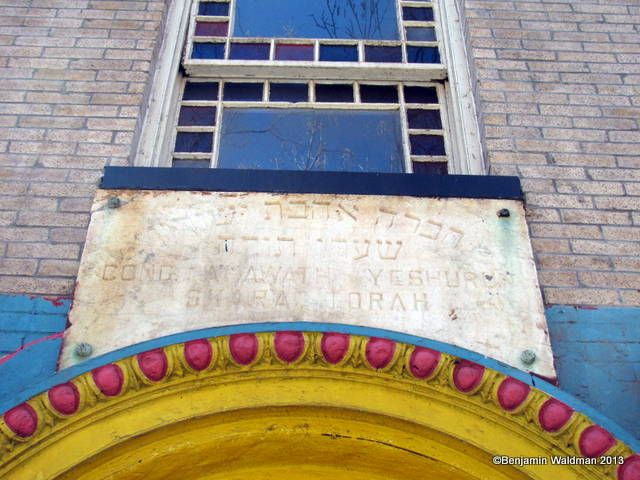
Next, check out Top 10 Jewish History Sites on the Lower East Side
This article was written by Wesley Yiin with updates and additions by Nicole Saraniero
Subscribe to our newsletter